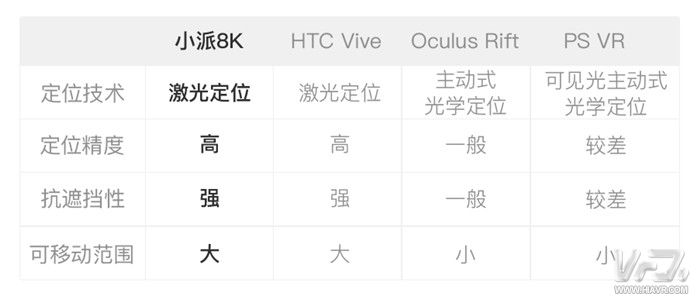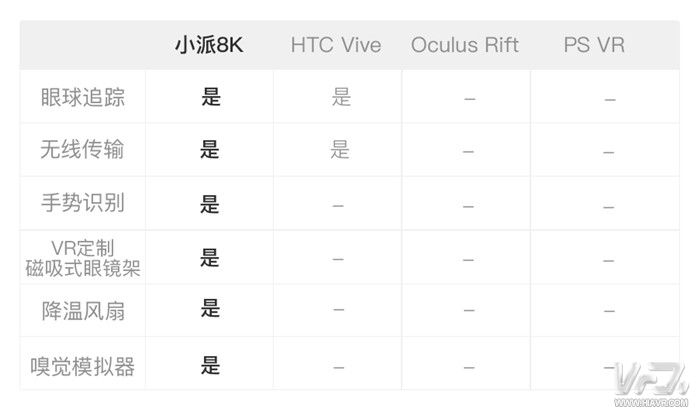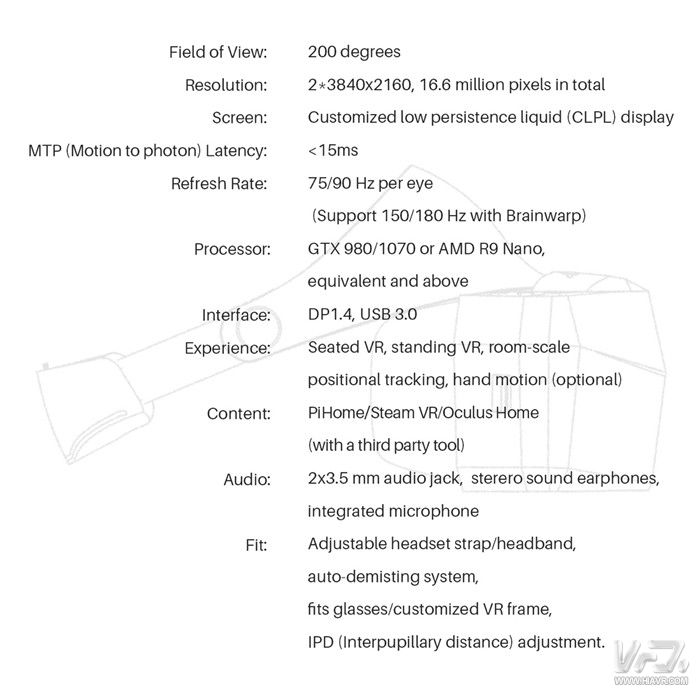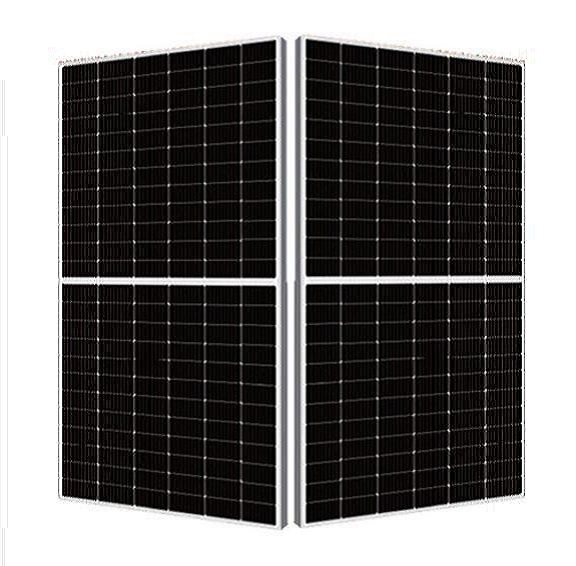In September 2017, the foreign forums exposed all the technical parameters of the domestic VR head developer R & D 8K. Some VR geek players in the circle are excited, but some friends are full of this seemingly incomprehensible figure. Curious. What exactly does these parameters mean in product experience? Today we decided to adopt a horizontal comparison method to intuitively let everyone know how small 8K this product will bring surprises to users and the market. 1, resolution When you talk about VR resolution, you have to explain why there is a "window effect." First, the pixels assigned to each eye of the screen are actually only half of the total pixels. Second, the VR screen is relatively close to the eye, so fewer pixels are visible in each field of vision, and these two factors combine to create a screen effect. If it is to reduce the effect of screens to the eyes of the human eye, at least 4K resolution screens are required. The small 8K resolution reached a single eye 4K, eyes 7680x2160, leading VR into the 8K era. What is a pity is that the three biggest heads of sellers may not even achieve 1K resolution. 2, FOV FOV The angle of view is one of the parameters that have the greatest impact on immersion in the VR experience. When people face the front, the viewing angle is generally around 100°, and the mainstream VR head configuration may seem to have satisfied the demand. But the problem is that when the rest of the person feels that the movement wants to see what is happening, the instinctive reaction is to first turn the eyeball and the movement of the neck will follow. At this time, if you use VR with an angle of view of about 100°, you will see the frame when the eyeball turns. There will be a "secondary play" feeling during the game or watching the movie. The small 8K field of view reaches 200°, close to the maximum 200-220° angle of view when the human eye rotates, and the VR experience will no longer have the interference of the frame, which can be said to be an immersive experience. If you still can't feel the difference, you can imagine the difference between seeing the bottom of the sea with a goggle and seeing the sea floor with naked eyes. The sense of immersion in broadness can't be quite the same. 3, overall delay Through several comparisons and tests, the industry has delineated several lines for the overall delay of VR devices. Passing below 20ms is a pass. Less than 18ms is excellent, while Pico 8K reduces the overall delay by optimizing the screen and software algorithms. Below 15ms, the technical parameters that lead the industry in the currently announced VR headshots, the vertigo problem in the VR experience can be almost ignored in the Little 8K body. 4, screen refresh rate Mainstream VR makes the movement of the image appear more continuous by using the low persistence of the OLED screen. Although the delay can be reduced and the refresh rate of the screen can be increased, the supply of OLED screens is restricted by Samsung, and the supply chain is weak. Even large companies such as Apple did not solve this problem. The small school 8K uses an exclusive custom CLPL screen that can be provided by multiple vendors. At the same time, through the alternate refresh technology of Brain-Warp's left and right eyes, the screen refresh rate is doubled, up to 180hz. 5, positioning support Indoor positioning technology is a very important part of VR. One is to be able to locate the player's real-time location and provide better immersion. In addition, because the screen matches the player's movement, it can effectively reduce the sense of vertigo. Little 8K is equipped with PiTracking, a self-developed sub-millimeter-level laser positioning system that can achieve 360° coverage of a single lighthouse. Compared with the optical positioning of Oculus and PS VR, with higher accuracy, VR is not easy to lose the signal during use. At this point, small 8K and HTC Vive win. 6, weight HTC Vive, Oculus, PS VR, PS VR is the heaviest, but due to the unique ergonomic design makes it more comfortable to wear than the other two. Although the small school 8K is equipped with two 4K screens, the volume is also larger than the HTC Vive, but the weight is controlled at about 300g, showing that the team has made a lot of efforts in the structural design. 7, scalability Throughout the market, VR is an industry, not a company's product. So we have seen more and more companies, such as Leap motion, tpcast, Qixin Yiwei, and other companies in the development of supporting hardware for VR devices. The VR head-up R&D team also began to design products with a more open mind, so that the playability of VR could be further brought into play. Currently, there are still many bottlenecks and technical barriers in the development of VR hardware. Even in 2017, VR giants have not introduced new products. In this context, as a domestic R&D team, Xiaopai Technology has launched a low profile for a year and launched. Such a parameter rolling over the new products of peers has indeed made a difference in promoting the development of industry technology. It is hoped that more entrepreneurs will use the squid effect to develop the VR hardware in the direction of high resolution, large field of view, and portability, and will soon become popular. Photovoltaic Monocrystalline Module The benefits of Solar Panels and solar power is that, once a system has paid for its initial installation costs, the electricity it produces for the remainder of the system's lifespan, which could be as much as 15-20 years depending on the quality of the system, is absolutely free! For grid-tie solar power system owners, the benefits begin from the moment the system comes online, potentially eliminating monthy electric bills or, and this is the best part, actually earning the system's owner additional income from the electric company. Photovoltaic Monocrystalline Module,Solar Energy Pv Module,Monocrystalline Solar Panel Module,Silicon Pv Mono Solar Module Jiangxi Huayang New Energy Co.,Ltd , https://www.huayangenergy.com








